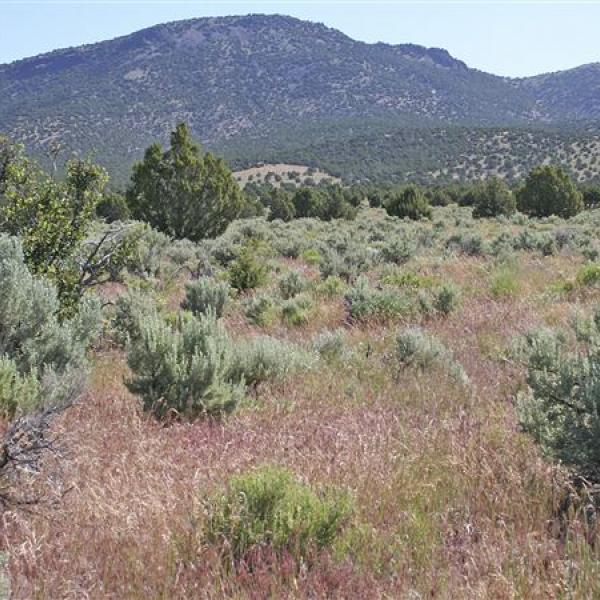
News Source
More detailed information about the results that were featured in a News item in mid-January, link to previous news item: http://vtinvasives.org/news/big-picture-view-invasive-plant-problem
"U.S. Forest Service researchers have compiled information on invasive species in forests throughout the nation. The results aren’t surprising — they’re a problem everywhere — but they paint an interesting picture on humans’ impact on forested ecosystems.
The results, published in January 2015, show at least one exotic plant species is present in 39 percent of the forested plots sampled throughout the country, including Alaska and Hawaii. The survey included all 741 million acres of public and private forested land in the United States, not just lands managed by the U.S. Forest Service. Scientists with the Forest Inventory and Analysis (FIA) program studied ⅙-acre subplots within every 6,000 acres of forested land for evidence of non-native plants.
“From invasive grasses that exist on the forest floor up to the largest trees that are invasive, everything is documented that we can find,” said Chris Oswalt, a research forester based in Knoxville, Tennessee, and the lead author of the study.
Hawaii has by far been hit the hardest by non-native species, with 70 percent of its forested land impacted, but the East Coast, the South and the Great Lakes Region have a significant invasion rate, too.
“The population is larger in the East, so along with that larger population comes more disturbances, more movement and more neighborhoods penetrating into forests,” Oswalt said. “With those neighborhoods come people planting things and increasing pressure around the forest edge.”
The Intermountain Region, which includes forests in Utah and its bordering states, tallied the lowest rate of invasive species with six percent of forest plots containing invasives, compared to 39 to 52 percent in Eastern forests. But Oswalt said that doesn’t mean there isn’t a problem here.
“The Intermountain West region has many, many, many invasive plants that are problematic outside of forests — in grasslands, range and shrub lands,” he said. “So, while that map shows a lack of invasive plants in the Intermountain Region, it’s somewhat underrepresented.”
Intermountain Forests are more rugged and isolated, with fewer access roads than forested lands found in the East, which might prevent people from spreading exotic species.
“We have less population, so there are fewer people on the forest per square mile ... recreating and going into those lands,” said Chris Witt, an ecologist with the Rocky Mountain Research Station.
But exotic plants still take a toll on local forests in Utah. Problematic species include spotted knapweed, purple-loosestrife and lots of thistles, like musk thistle and bull thistle. And of course, there’s cheatgrass.
“That’s a big one,” Witt said. “I’d imagine that’s the one species that covers more acreage in Intermountain West than any other.”
Cheatgrass is mostly associated with shrub land and grassland ecosystems, but it can spread into low-elevation ponderosa pine and pinyon-juniper forests, too.
Oswalt said people have been impacting landscapes since they first started moving around. He calls it a “human land-use legacy,” and it’s what forest researchers look for when they try to understand patterns of large-scale invasion patterns.
“One great example that you can see on (the study’s) map is along the major travel corridors in Eastern Seaboard — you can see they’re heavily impacted (by invasives),” he said.
Humans spread non-native plants by what they plant in their gardens, through weeds in livestock feed and from seeds that hitchhike on backpacks, bike tires and boots. But those exotic plants can cycle back and impact people, too. Non-native grasses are impacting pine plantations where Oswalt works, which puts an dent on the timber industry.
In the Intermountain Region, people who enjoy hunting, birdwatching or hiking among butterflies and wildflowers should worry about invasive plants.
“Exotics can displace those things and make (forest) communities much less diverse,” Witt said. *
In other words, non-natives can overrun a landscape, drive out its wildlife and make things look pretty monotonous, too.
Forest ecosystems overrun by invasives also become more prone to disturbances. Cheatgrass, for example, dries out earlier than native grasses and fuels massive wildfires in the Great Basin.
While the U.S. Forest Service is actively collecting data on the nation’s invasive species problem, individuals can help, too, especially by knowing how to identify non-natives in local forests.
“If you’re on a walk, mountain biking trip or on a canoe trip, if you can identify them you can report them, and that’s good,” Witt said. “Let forest management know.”
Both Witt and Oswalt said its important for every person to be aware of the mark she leaves in the forest. Inspect backcountry equipment, fishing gear and clean cars to remove weed seeds before traveling through forests. Many problematic non-native species are still widely available at home improvement stores and plant nurseries. Oswalt said to avoid planting them.
“It’s about educating yourself on the impacts they can have and trying to account for those impacts in your daily activities and daily lives,” he said. “And trying to limit their spread.”"
Article Credit: Leia Larsen, llarsen@standard.net
Additional resources: http://www.fs.fed.us/blogs/big-picture-view-invasive-plant-problem